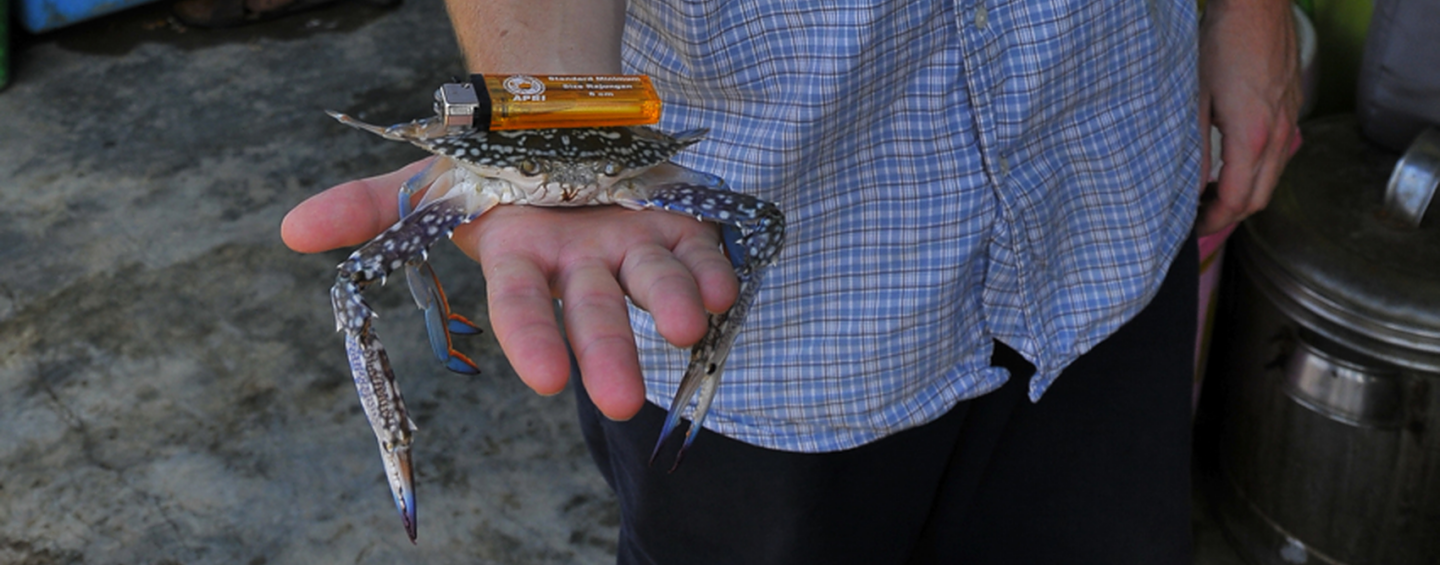It’s been nearly a year now since organizers of a national-level fishery improvement project (FIP) for blue swimming crab (BSC) in Indonesia took the critical step of instituting a control document. Now comes the real test: Will the supply chain participants comply with the conditions set in the document? While the auditing process is still in the early phase, initial results are promising, leaving us at SFP feeling very optimistic for the future use of this supply chain accountability tool.
Over the past four years, members of the BSC supply chain in Indonesia have been developing a process to ensure that BSC products from Indonesia have been legally harvested, and that this is verifiable through a third-party audit system. The process uses a supply chain tool, the control document, coupled with an audit system. The overall goal is to improve the quality of exported crab product from Indonesia while also supporting more sustainable harvest strategies aimed at improving BSC stocks and their habitats.
This strategy has been successfully used in other fisheries, such as the Gulf of California industrial shrimp fishery, to ensure legal fishing practices, and was championed there by both suppliers and buyers. Industry champions within the Indonesian BSC supply chain have also emerged for the control document effort. They, in turn, get support from the collaboration between the US National Fisheries Institute (NFI) Crab Council, made up of importers of BSC products, and the Indonesia Blue Swimming Crab Processors Association (APRI), made up of processors and exporters of BSC products.
- A letter of warranty, which is a legal agreement stating that all products and materials supplied to any buyer are legally caught and conform to all applicable national and international laws
- A list of the regulations in order to comply with the rules that apply to Indonesian crab fisheries (in this case, a minimum size limit of 10 cm and no harvest of egg-berried females)
- Audit procedures and auditor guidance
- The terms for penalties.
For Indonesian BSC, the control document process works like this: First, fishers land their catch with collectors (and their cooking stations). Then, the collectors and enumerators record the catch data on a control document landing report. The cooked crab and landing report are taken to the mini-plant (picking/peeling plant, where the meat is extracted) and this is then also recorded on the control document form. Finally, crab meat product and the control document data are transferred to the processing plant for pasteurization and packaging.
APRI has developed a mobile application, APRI Apps, to allow the supply chain to enter all of the landing, cooking, and peeling data. If everyone follows the control document process successfully, BSC products and their associated data can then be traced all the way back to the collectors and the fishing vessels that supplied them. This allows for evaluation of the level of compliance with fishery laws from the time the product is landed to the final export of the product.
The implementation of the control document was pilot tested in key BSC fishing areas in Central Java, East Java (Madura), and East Lampung. This effort required extensive outreach and training to collectors, mini-plants, and processing facilities, in order to better understand the barriers to and opportunities for success before rolling out the program across Indonesia.
In June 2018, the NFI Crab Council launched the full implementation of the control document system with an official start date of July 1, 2018. Now, independent auditors are visiting mini-plants throughout Indonesia to evaluate compliance with the document. Through a mapping project, APRI estimated there are 445 mini-plants throughout the country and is now aiming for 300 mini-plant audits for 2019 (and occasional checks of some of the collectors supplying those plants).
The initial results are very promising. To date, 35 mini-plants have been audited, and were found to have an overall compliance rate of 98 percent. More specifically, the audit has shown low levels of non-compliance for the minimum landing size regulation (5.7 percent) and the prohibitions on catching egg-berried females (8.5 percent), indicating that the regulations in place are being followed well.
There are more parts and pieces to the Indonesian BSC story, including the data collection efforts and community-based co-management activities that are also underway. Stay tuned later this year for more on these activities and updates on the progress of the continued implementation of the control document and audit process for Indonesian BSC.
To learn more about the evolution of the control document process, read this from SFP.
To learn more about the control document and first round of audits, read the APRI report.

